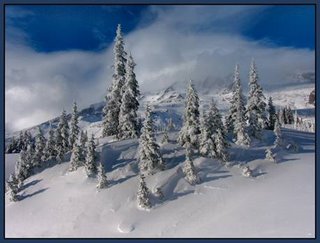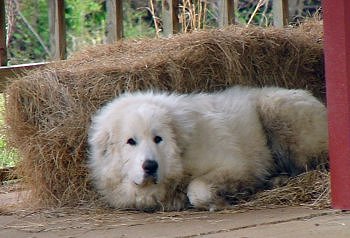 The Harry Wise family, about 1916 or 1917
The Harry Wise family, about 1916 or 1917
Wayne, Emma, William, Gladys, Harry, and KennethHarry H. Wise, son of William P. Wise and Sophia Dunfee, was born on August 10, 1874 in Whitley County, Indiana. He died on November 29, 1938 in Lorain, Lorain County, Ohio at age 64, and was buried in Elmwood Cemetery in Lorain, Lorain County, Ohio.
Harry married
Emma Klieman. She was born on August 6, 1881 in Mount Clemens, Macomb County, Michigan and died on October 17, 1952 in Mt. Vernon, Knox County, Ohio at age 71. She was buried next to her husband, Harry Wise, in Elmwood Cemetery in Lorain, Lorain County, Ohio.
His obituary was published in the Columbia City Post (Whitley County, Indiana) on November 29, 1938.
Harry H. Wise, 64, native of Thorncreek township, died today of heart trouble, at his home in Loraine, Ohio, after an illness of two weeks, according to a message received today by his two sisters, Mrs. Jos. Yontz, of this city, and Mrs. Harlo Burns, of Troy township.
Mr. Wise, a son of the late Mr. and Mrs. William Wise, of Whitley county, located in Ohio forty-four years ago. For forty years he had been district agent for the Massachusetts Mutual Life Insurance Company, and during that time has maintained offices in Lorain.
He is survived by his widow, Mrs. Emma Wise, a native of Mount Clemons, Mich., and three sons, William, a druggist, Dr. Wayne Wise, a chiropodist, and Kenneth; and a daughter, Gladys, now married, a former teacher, all of Lorain. Besides the two sisters residing here, Mr. Wise is survived by a brother, Morris, residing in Sturgis, Mich.
Funeral services will be held Thursday afternoon at 2 0'clock in Lorain and committal services will be held there. Mrs. Yontz will be unable to attend the funeral rites of her brother because of illness which has confined her to her home in this city.
His obituary was also published in The Lorain Journal (Lorain County, Ohio) on 29 Nov 1938.
Harry H. Wise, 64, 901 7th-ct., prominent Lorain Insurance agent, died this morning at his home following a brief illness. Born in Indiana, Wise came to Lorain in 1895. He was appointed the first paid driver of the Lorain fire department in March, 1901, stationed at No. 1 station.
Leaving the fire department after nearly six years of service, he went into the real estate business for a short time and then into the insurance business, in which he had been engaged for the past 30 years. Wise was connected with the Massachusetts Mutual Life Insurance Co. at the time of his death. He was an active member of the Christian temple and Woodland lodge Knights of Pythian.
Survivors are his wife, Emma, to whom he was married Jan. 1, 1900; three sons, William, Amherst; Kenneth and Wayne, Elyria; one daughter, Mrs. Gladys Stegall, Mt. Vernon; one brother, Morris, Sturgis, Mich.; and two sisters, Mrs. Harl Burns, Etna, Ind., and Mrs. Joseph Yontz, Columbia City, Ind. Eight grandchildren also survive.
Funeral services will be held at 2 p.m. Thursday at the Sidney B. Royce funeral home with Rev. B. H. Linville, pastor of the Christian Temple, officiating. Burial will be in Elmwood cemetery. The body will be take to the home tomorrow.
Emma's obituary was published in The Lorain Journal (Lorain County, Ohio) on 18 Oct 1952.
Mrs. Emma Wise, widow of the late Henry [sic] Wise, a Lorain insurance agent for many years, died last night at the home of her daughter, Mrs. Fred Steagall, Mr. Vernon. She was 71. She had been ill for several months and had just recently moved into Mrs. Steagall's home.
Mrs. Wise was a member of the Christian Temple, and is survived by two sons, William, Lorain, and Wayne, Elyria, in addition to Mrs. Steagall.
The body is at the Thompson Funeral Home, where services will be held Sunday at 2 p.m. Rev. Wood B. Cundiff will officiate. Burial will be in Elmwood Cemetery.
The family of Harry Wise was located Lorain County, Ohio in the following census records:
1900 1717 Lexington Ave., Lorain, Black River Township page 30 E.D. 79
1910 408 Idaho Ave., Lorain, Black River Township page 175 E.D. 89
1920 Lorain, Ward 2 page 54/3A E.D. 8
1930 Lorain, Ward 2 page 16/2A E.D. 11
Harry H. Wise and Emma Klieman had four children:
1. William Harold Wise was born on August 3, 1900 in Lorain, Lorain County, Ohio. He died on September 18, 1969 in Wilkinsburg, Allegheny County, Pennsylvania at age 69, and was buried in Elmwood Cemetery in Lorain, Ohio. William married
Anna Hazzard about 1921. Anna was born about 1901 in Cleveland, Cuyahoga County, Ohio. She died on January 22, 1960 in Lorain, Lorain County, Ohio 10 at age 59, and was buried in Elmwood Cemetery in Lorain, Ohio.
An unidentified article in "the scrapbook," presumably from a Lorain, Ohio newspaper, no date, provides a short description of the wedding of William Wise and Anna Hazard. The 1930 census indicates that they were married when they were both 21 years old, which puts the event at about 1921.
Charmingly attired in a suit of navy blue broadcloth with a picture hat of black velvet, and carrying a bouquet of white roses, Miss Anna Hazard, daughter of Mr. and Mrs. Joseph Hazard, of West 27th street, was united in marriage to William Wise, son of Mr. and Mrs. Harry Wise of Washington avenue. The ceremony was performed at seven o'clock last evening in the parsonage of the Church of Christ by the Rev. L. O. Newcomer. Only the immediate families witnessed the wedding.
Miss Gladys Wise, sister of the groom, attended Miss Hazard. She also wore a navy blue suit with fall hat to match. Her flowers were pink roses. William Hazard, brother of the bride, attended the groom.
Mr. and Mrs. Wise left last evening for a short trip to Buffalo and Niagara Falls. Upon their return they will reside in Lorain. Mrs. Wise is one of Lorain's most popular young women. She is a graduate of Lorain High School and is employed as bookkeeper at the Allen Shoe Store.
Mr. Wise is also a well known local man. He is a graduate of Lorain High School and at present is attending Western Reserve University where he is studying pharmacy. He is a member of the Church of Christ.
William's obituary was published in The Lorain Journal (Lorain County, Ohio) on September 19, 1969.
William H. Wise, 69, 1423 D St., Lorain, a lifelong resident of Lorain, died yesterday at Columbia Hospital, Wilkinsburg, Pa. He had been visiting his son, William, in Monroesville, Pa. He was a pharmacist and had worked for Standard Drug and Revco Companies. He was a member of the Christian Temple Church.
Survivors besides his son, include a daughter, Mrs. Charles (Mary Ann) Lambdin, Port Arthur, Tex.; several grandchildren; a sister, Mrs. Gladys Steagall, Huron, and a brother, Wayne Wise, Elyria. Friends may call at the Schwartz, Spence and Boyer Home for Funerals tomorrow from 7 to 9 p.m. and Sunday from 2 to 4 p.m. and from 7 to 9 p.m. The Rev. James Hartley of the Christian Temple will officiate at services at the funeral home Monday at 1 p.m. Burial will be in Elmwood Cemetery.
Anna's obituary was published in The Chronicle Telegram (Elyria, Lorain County, Ohio) on January 22, 1960.
Lorain - Mrs. Anna M. Wise, 59, of 1423 D St., died in St. Joseph Hospital this morning after a short illness. She was the wife of William H. Wise. Besides her husband she leaves a son, William W., Hobart., Ind.; a daughter, Mrs. Charles Lambdin, Sheffield Lake; five grandchildren; her mother, Mrs. Mary Ann Hazzard, Lorain; two sisters, Mrs. William Bock, Salem and Mrs. Eugene Wood, Amherst; two brothers, Joseph Hazzard, Avon and William Luther, buffalo. The body is at the Schwartz-Spence Home for Funerals. Arrangements for services are incomplete.
2. Kenneth Klieman Wise was born on October 18, 1901 in Lorain, Lorain County, Ohio and died on July 10, 1948 in Elyria, Lorain County, Ohio at age 46.
The Ohio Death Records online at www.familysearchlabs.org provided his birth and death information. It also gives his wife's name as Vada Mae. The 1930 census for Lorain County (Elyria Ward 1 page 22) shows Kenneth as head of household, age 28 and wife Vada, age 27. They were married when he was 21 and she was 20 so year of marriage would be about 1923. Also listed was a son Jack and a daughter Betty.
3. Gladys Margaret Wise was born on March 10, 1903 in Lorain, Lorain County, Ohio. Gladys is not listed in the Social Security Death Index so it is possible that she may yet be living. She married
Fred Steagall about 1927. He was born on January 24, 1903 in Ohio and died on March 27, 1984 in Fort Myers, Lee County, Florida at age 81.
In 1930, Gladys and Fred were living in Knox County, Ohio (Mt Vernon, Ward 3 page 45/2A E.D. 9). They were living in Mt. Vernon, Knox County, Ohio when her mother died in October 1952. Gladys lived in Huron, Ohio when her brother, William, died in September 1969 and resided in Ft. Meyers Beach, Florida on March 23, 1974 when her brother Wayne died. My grandmother's notes indicate that Gladys and Fred Steagall had two sons.
4. Wayne Clayton Wise was born on September 20, 1909 in Lorain, Lorain County, Ohio and died on March 19, 1974 in Fort Myers, Lee County, Florida at age 64.
An abstract of his obituary was on found online at the the Cleveland Necrology File (The Plain Dealer, Cleveland, Cuyahoga County, Ohio March 23, 1974) shows that his wife, Margaret, was still living as were two children.
Sources are available upon request. Harry Wise is my Great-Granduncle, a brother of my Great-Grandmother, Maude Wise Brubaker Yontz. If anyone reading this is related to any of these people, or knows anything about them, please contact me at kinexxions "at" gmail "dot" com!
 First cold lead of day
First cold lead of day
 Sorting gear for Forbidden (photo by Steve Machuga)
Sorting gear for Forbidden (photo by Steve Machuga) Following the second pitch (photo by Steve Machuga)
Following the second pitch (photo by Steve Machuga) Climbing up to the notch (photo by Steve Machuga)
Climbing up to the notch (photo by Steve Machuga) Topping out on the 5.8 (photo by Steve Machuga)
Topping out on the 5.8 (photo by Steve Machuga) My last lead up the East Ridge (photo by Steve Machuga)
My last lead up the East Ridge (photo by Steve Machuga) Summit shot (photo by Steve Machuga)
Summit shot (photo by Steve Machuga) The Sutton family plot in Highland Cemetery, Iola, Kansas. The three stones in front are for Harmon, his wife, and their son.
The Sutton family plot in Highland Cemetery, Iola, Kansas. The three stones in front are for Harmon, his wife, and their son. HARMON H. / 1902-1945
HARMON H. / 1902-1945 FLORENCE M. / WIFE OF / H. H. SUTTON / 1899-1924
FLORENCE M. / WIFE OF / H. H. SUTTON / 1899-1924 S/SGT. KENNETH W. SUTTON
S/SGT. KENNETH W. SUTTON

 WILLIAM P. / 1852-1935 / SOPHIA E. / 1850-1916 / WISE
WILLIAM P. / 1852-1935 / SOPHIA E. / 1850-1916 / WISE



